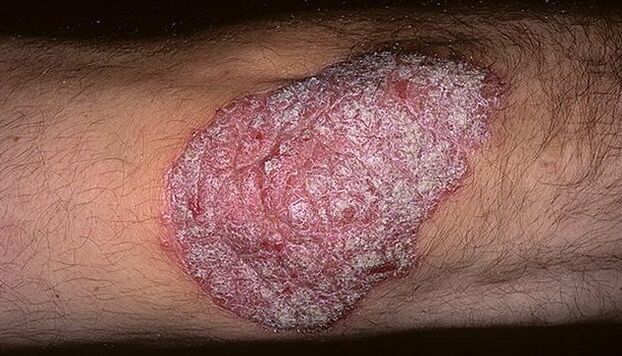Psoriasis is a common, chronic, non-communicable disease that affects approximately 100 million people worldwide.
What are the symptoms of psoriasis?
This is how the disease manifests itself.Skin cells divide 10 times faster than normal, overlapping each other and forming raised red spots covered in silvery-white scales.These sores can appear anywhere, but most often on the head, elbows, knees, and lower back.
Here are some more signs that appear along with spots:
- itching and burning;
- thickening and small pits in the nails;
- Swollen and painful joints.
There may be other symptoms, depending on the type of psoriasis.
What types of psoriasis exist?
There are seven in total
- Ordinary, also known as vulgar.The most common type: raised, red, inflamed skin covered in white scales.
- In the shape of a tear.Small reddish-pink spots usually appear on the head, thighs, forearms, and torso.
- Nail psoriasis.They become yellowish brown, soft, and may separate from the socket.Indentations or thickening appear.
- Pustular.It is a rare form of the disease that can be accompanied by fever, chills, nausea, muscle weakness and rapid pulse.Purulent bumps appear on the arms, legs and fingers, surrounded by red skin.
- Reverse.Smooth, shiny red spots without scales.They appear most often in the groin, armpits, under the breasts, and buttocks.
- Psoriatic arthritis.In addition to plaques on the skin, it causes pain and swelling of the joints.

Where does psoriasis come from?
Anyone can get psoriasis, but it occurs more often in adults than children.
The exact causes of the disease are unknown.But it is believed to be an autoimmune disease: immune system cells, also known as white blood cells, become overactive and mistakenly attack healthy tissue.
Psoriasis can be caused by one or more factors:
- infection;
- stress;
- smoking or drinking alcohol;
- tanned;
- vitamin D deficiency;
- some medications and substances: lithium preparations, beta-blockers, anti-malarial drugs, iodides.
You cannot get infected with psoriasis.It is not transmitted by contact with a patient's skin.
How is psoriasis treated?
There is no way to get rid of psoriasis, but you can relieve its symptoms.Selecting procedures and medications is quite difficult.What works for one person sometimes doesn't work for another.A dermatologist must develop and adjust the treatment plan.
The doctor may recommend the following.
Creams and ointments for the skin.
They are used to soften plaques, reduce itching and slow the growth of skin cells.These are the external remedies:
- hormonal ointments;
- coal tar shampoos and ointments;
- preparations with retinoids.
Phototherapy
Irradiation of the skin with natural or artificial ultraviolet light is carried out in a hospital under the supervision of a dermatologist.Phototherapy is usually used in parallel with external medications.
The simplest way is ordinary sunlight.But even if you decide to sunbathe, you should first consult with your doctor.This method is not suitable for everyone.
Systemic treatment
This is heavy artillery when other methods fail.The doctor prescribes a course of tablets or injections that affect the entire body.
Prescribing medication yourself or taking it on the advice of friends is a very bad idea.
Self-medicating psoriasis can cause the disease to spread to virgin areas of the body and increase the frequency of flare-ups.
The patient does not take into account the side effects of various medications and harms himself.
Don't do this, go to the doctor!
How to reduce the frequency of psoriasis flares
In addition to the prescribed treatment, do the following:
Do not smoke or drink alcohol.Treating bad habits is less effective.
Watch your weight.After losing extra pounds, many patients find that medications that didn't work before begin to work.
Eat a balanced diet.This will reduce the risk of complications associated with psoriasis: high blood pressure, diabetes, stroke, atherosclerosis.
Do yoga and meditation.They reduce stress and anxiety that can cause flare-ups.
Apply a thick moisturizer to your skin as needed throughout the day to soften it.Be sure to do this after showering and before going to bed.
Take colloidal oatmeal or salt baths every day for 10 minutes.Just make sure the water is not too hot.And don't use strong soaps, which dry out the skin too much.























